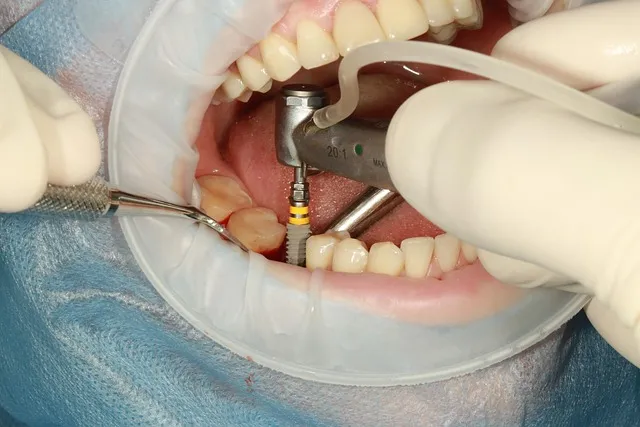When many of us think of braces, we think of teenagers who are going through their awkward years with metal on their teeth as they work toward their brilliant, straight smile. But, what about adults? Has time passed them by? Are they no longer young enough to get that straight smile they've always wanted? According to Smiles on Queen, it's never too late to get braces to fix various dental conditions. In fact, there are now more options than ever before that work well with adult lifestyles.
Orthodontics for Children and Teens
Traditionally, the ideal time for someone to get braces is during early adolescence or early teens (between ages 10 and 14). This is because they have nearly all their adult teeth in place and their jaw tissue is still pliable enough to move the teeth relatively quickly. Of course, a lot of orthodontics work starts earlier than age 10, depending on what type of treatment is required. Some children need spacers or other orthodontic appliances to keep their teeth in a specific position while their adult teeth grow in. Additionally, certain bite misalignments need early intervention, which is why major orthodontics associations recommend children see an orthodontist by age seven to detect any major issues. This doesn't mean they will get braces that young, but that decision depends on the severity of the issue and the treatment that is most effective in correcting it. An orthodontics evaluation is always required before determining a treatment plan because no two mouths are exactly alike.Orthodontics for Adults
Even though the ideal age for a person to get braces is between the ages of 10 and 14, this doesn't mean that if you are older than 14, you can't get braces. It also doesn't mean that your orthodontic issues can't be fully corrected. It just means the process might be a little slower than it would have been if you would have had braces as a teenager. The reality is, though, that you probably won't even notice the difference in length of treatment as an adult because it's very nominal. Statistics show that adults account for approximately 20% of all orthodontic patients, so you're by far not the only one pursuing this option. And they're not just doing it to get a perfect smile, either. Of course, that's a great reason to get orthodontic treatment, but having straight teeth has other benefits as well, including:- Easier to keep clean
- Protects against tooth decay, gum loss, and tooth loss
- Eliminates or lessens jaw pain due to misalignment
Orthodontic Options for Adults
Certainly, adults can have the exact same orthodontic treatment that they would have received as teenagers. Metal braces are still the most common orthodontic option for both teens and adults. But, you can also get clear or tooth-colored ceramic brackets that are less noticeable than the conventional metal version. Treatment time for this option is usually the shortest of all options, but the actual treatment time will depend on the severity of your dental issues. Aligners are another popular orthodontic option for adults because they are much less noticeable than any kind of braces. Through a series of clear plastic trays that mold to your teeth, the orthodontist moves your teeth a couple of millimeters with each tray set. There are usually around 25 tray sets per treatment, so over the course of time and tray sets, your bite and teeth move into the final position. Aligners are not usually recommended for severe orthodontic issues that require significant twisting or movement. Moreover, aligners take discipline to ensure they work and that your treatment time is as short as possible. This is because they have to be worn for 22 hours per day, only being removed to eat. If you don't wear them for that length of time each day, your time in treatment will be extended. This is why many parents of teenagers opt for traditional braces instead of aligners, but as an adult, you are probably responsible enough to follow the treatment plan. Also Read: 3 Teeth Whitening Procedures.Considerations for Adult Orthodontics
The biggest difference between getting braces as a teenager and getting them as an adult is that your treatment time may take a little longer. But there are some other considerations as well. For example, depending on your age and habits, you might have teeth conditions that have to be treated before you can get braces. These conditions might include gum disease and tooth loss. Habits like smoking and grinding teeth will have a more significant effect on your teeth the older you get, which can impact the results you might get from braces or aligners. If you intend to get braces or aligners at any time in the future, it's best to break these habits as soon as possible. Conclusion Getting braces as an adult may seem strange, but it really isn't. Millions of adults now have the smile they deserve because they finally made the decision to seek orthodontics care. You can be the next satisfied patient!
Reviewed by







